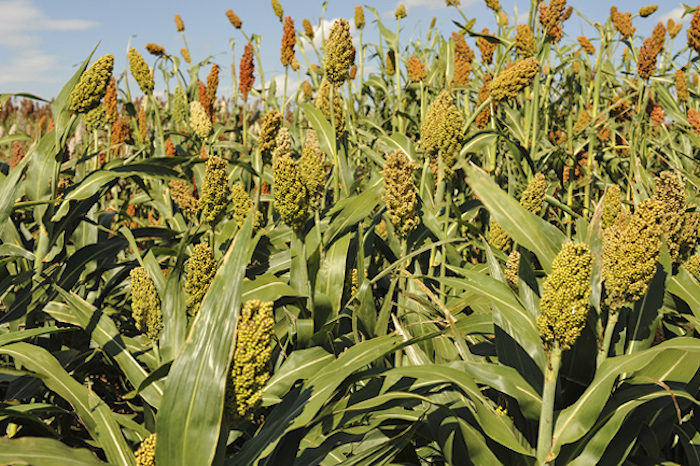Grain sorghum is cultivating fans among Arkansas farmers as a tool in the battle against resistant pigweed, its ability to grow in non-irrigated fields and attractive commodity prices.
This type of sorghum, or milo as some people call it, is grown for its grain as opposed to sweet sorghum which is grown to make sorghum molasses.
“Many producers grew grain sorghum to help combat glyphosate-tolerant pigweeds,” says Jason Kelley, extension wheat and feed grains agronomist for the University of Arkansas System Division of Agriculture. “Unlike other crops, growers are able to use the herbicide atrazine on sorghum, which, when used correctly, is very effective on pigweeds.”
Atrazine is labeled for use on both corn and grain sorghum in Arkansas.
Kelley says an estimated 50% of grain sorghum is grown on non-irrigated fields, many where corn may not be a good option.
Sorghum prices were also higher than corn throughout 2014, but dropped at harvest time.
“Like the other major crops, sorghum prices have collapsed this year,” says Scott Stiles, extension economist for the University of Arkansas System Division of Agriculture. “Prices peaked in April and remained on a steady trend lower through September.
“By the end of September, 84% of the state's sorghum had already been harvested. Without forward pricing, we likely sold the majority of this year's crop at seasonal lows.”
Basis, the numeric difference between a commodity’s cash price and its futures price, reached the strongest level of the year, thanks in part to export demand.
“Sales to China this year are 79% higher than a year ago and export sales overall are 54% higher than last year,” Stiles says.
Looking Toward 2015
Kelley says many growers are looking to expand acreage in 2015.
"With prices equal to or greater than corn, and with input costs that are significantly lower than corn, grain sorghum is a good fit … and more grain terminals are buying grain sorghum, which in the past, has been a problem,” he says.
He adds the pace of export sales may lead to future increases in the USDA's export estimate for the 2014-15 marketing year and ending stocks could tighten.
“New crop (2015) bids on the Mississippi River were near $4 for both corn and grain sorghum,” on Dec. 10, he said. “As growers make plans for next year, they are taking a close look at sorghum and seeing the possibility of sorghum prices increasing through much of 2015.”
There is one shadow in sorghum’s otherwise bright picture for 2015: the sugarcane aphid.
“It became a problem in grain sorghum in Arkansas for the first time in 2014 and is something growers will need to be watching for,” Kelley says.
The pest was previously known to feed on sugarcane in Texas and Louisiana, but in 2014 spread across sorghum plots throughout the Southeast, including Arkansas.
“We still have a lot to learn, but economical management is possible,” says Nick Seiter, extension entomologist for the University of Arkansas System Division of Agriculture.
Late-planted sorghum in 2014 was especially vulnerable in the pre-boot stage when growers usually don’t scout for pests, he says.
“Heavy aphid feeding before head formation can result in plant death and we saw this across entire fields in a few extreme cases,” Seiter says. ”Feeding during grain formation can also reduce yields, and losses at harvest are possible if the aphids are still present in the head.”
He adds that chemical management can be problematic.
“We received a Section 18 label exemption to use Transform in 2014, and we had pretty good results overall,” Seiter says. The situation for 2015 is still in flux, so growers should keep an ear open for updates.
He says extension recommends a preliminary action threshold of 25% of plants infested with 50 or more aphids per leaf.







Post a comment
Report Abusive Comment